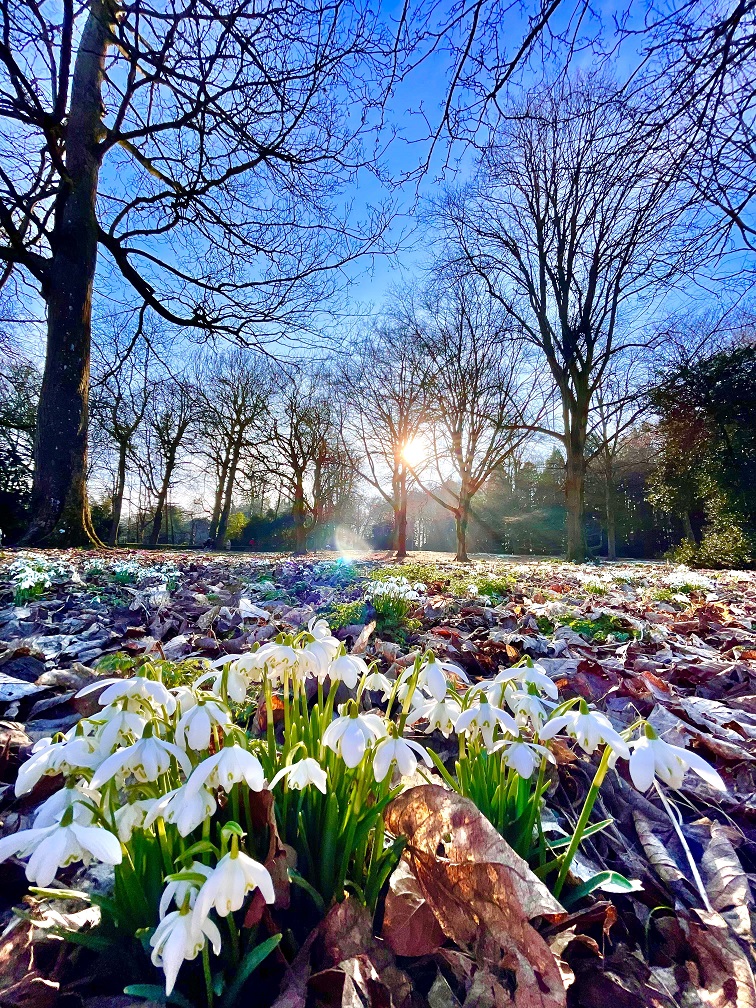The Park Landscape in February
The Winter months, when the trees are leafless, the vegetation has died back and the frost sharpens the outlines of the land, is a time when we can see many clues and distinctive architectural features to the park that may have been there for hundreds of years. Originally a medieval deer park carved out from the forest of Braydon, Lydiard Park has evolved into the landscape you see today.
The first baronet, Sir John St. John (died 1648) is credited with creating formal gardens and remodelling the medieval house. The earliest known plan of the park was made in 1700. It shows a birds- eye view of the Elizabethan style manor house fronted by a gravel forecourt, with rails and gates separating it from the park.
Beyond the house to the south east, where the current lawn sweeps down to the lake, the plan shows a grid of formal gardens with topiary, paths and terraces overlooking a formal canal. Straight lined avenues stretch out towards the wider estate. The discovery of a bowling ball during excavations in the lake shows that the gardens were also used for bowling in the 17th century. Humps and bumps are still visible on the lawn today, clues to the lost formal gardens of Lydiard.
The lake itself has gone through many different formations. Originally created as a formal canal in the 17th century with a causeway where the dam wall is now, it was altered in the mid-1700s to create a more natural feature. There had also been an old pond that had provided fish for the house; this was a part of the medieval deer park. In this corner of the grounds you can see the original medieval wall of the estate.
Look out for the ha ha, the ditch that kept cattle and deer away from the lawns closest to the house. A ha-ha was often used in landscaped gardens and parks in the eighteenth century. It involved digging a deep, dry ditch, the inner side of which would be built up to the level of the surrounding turf with either a dry-stone or brick wall. The outer side was designed to slope steeply upwards, before levelling out again into turf. The point of the ha-ha was to create a view of a continuous rolling lawn, whilst also providing boundaries for grazing livestock and wildlife. It originated in France and apparently derived its name from the success of the optical illusion it created from a distance on viewers of the garden: the hitherto concealed ditch and wall would surprise you as you got close to it, making you cry out: “Ah! Ah!” No doubt you would do the same if you fell in it!
Walking along the Avenue and various other of the grand paths through the woodland and across the park, it’s also wonderful to reflect that many of them were laid out in the 18th century and we are walking the same routes as people have done for centuries before.

As it’s February, be sure to look out for the snowdrops on your walks. Our feature photograph was taken by Natalia Grygorkina, and we love her perspective on the woods and their beauty. You can read more about them here. You can also download guided walk of the park here.